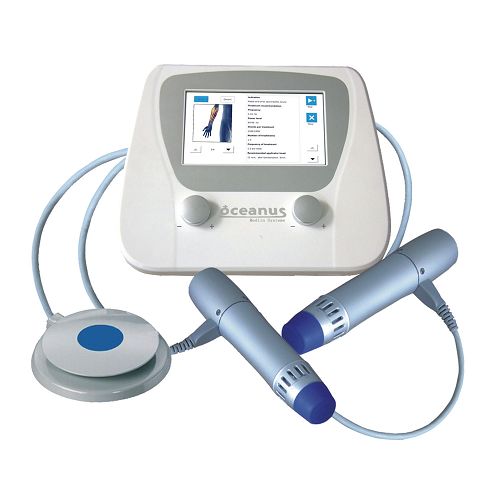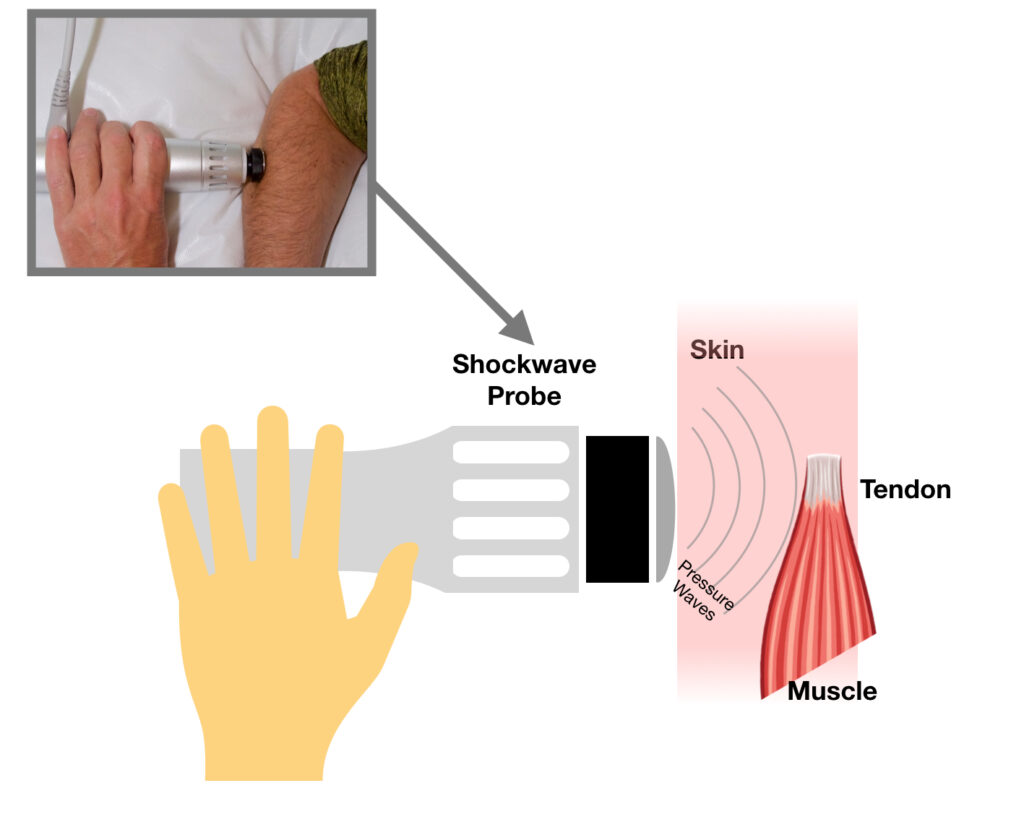New to my practice as of Summer 2020 is a ShockWave therapy machine.

OVERVIEW
Shockwave therapy is a non-invasive pressure based therapy used for treating both acute and chronic conditions in the musculoskeletal system. It is particularly effective for treating chronic tendon conditions such as tennis and golfers’ elbow, heel tendon pain, shoulder pain, plantar fasciitis, and lateral hip pain.
At higher treatment intensities, it can be used to assist the breakdown of calcific heal spurs and calcific tendinitis of the shoulder.
It can also be used to de-sensitise muscular trigger points and ease localised muscular pain. Shockwave therapy is particularly effective in chronic pain conditions that have not responded well to other forms of manual therapy.
At lower intensities, it has also proven effective in the management of superficial skin tissue conditions such as cellulite and stretch marks.
The National Institute of Clinical Excellence (NICE) has issued clear guidance on Shockwave therapy and its effective use for seven particular conditions: lateral epicondylitis (tennis elbow), calcific tendonitis of the shoulder, greater trochanteric pain syndrome (hip pain), proximal hamstring, patella and Achilles tendonopathies and plantar fasciitis.
HOW DOES SHOCKWAVE THERAPY WORK?
During a Shockwave therapy treatment, a hand held probe is presented to the surface of the skin to deliver pulsed pressure waves to the contact area. These pneumatic pressure waves penetrate the soft tissues up to a depth of 4-5cm.

As the pressure waves spread in the treated area, they dissipate energy to the surrounding tissues particularly at the boundaries between different tissue types (skin-tendon, or skin-muscle boundaries, for example). This dissipated energy causes alternating compression and expansion of the tissues (a process known as cavitation) and the body reacts to this with an inflammatory type response. This response, by increasing circulation and metabolism in the treated area, triggers the healing processes required to repair the damaged tissue restoring it to its pre-injured state.
In a typical treatment 1500-3000 pulses are delivered to the targeted area. The intensity of the treatment is gradually increased as the patient becomes accustomed to the sensation, which can be a little uncomfortable at first.
Depending on the condition, 3 to 6 treatments are often needed and ideally around 5 to 10 days between treatments. Pain relief can be experienced straight away but with some chronic conditions, it may take a little while for the benefits to be felt. Outward signs of inflammation (heat and swelling) can often be seen after a first treatment.
For more information, email me on philnuttridge@aol.com or call on (01280) 817200 or 07920 108489
